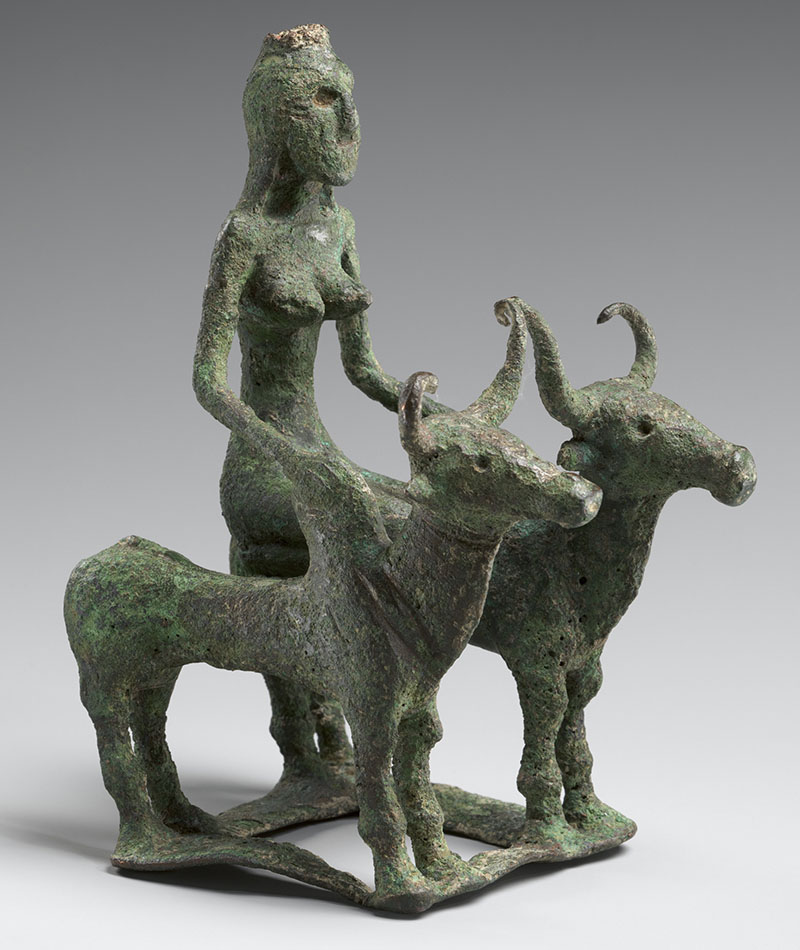ARTICLE
Woman Riding Two Brahman Bulls
Bibliography
Fairservis Jr., Walter. “Cattle and the Harappan Chiefdoms of the Indus Valley.” Expedition Magazine, 1986. http://www.penn.museum/sites/expedition/?p=6017.
Gandhiok, Tarini. “Why You Need To Know About the Empowering Harappan Sculpture of Woman Riding Bulls.” shethepeople, September 26, 2020. Accessed February 13, 2023. https://www.shethepeople.tv/news/why-you-need-to-know-about-the-empowering-harappan-sculpture-of-woman-riding-bulls/.
Lodrick, Deryck O. “Symbol and Sustenance: Cattle in South Asian Culture.” Dialectical Anthropology 29, no. 1 (2005): 61–84. http://www.jstor.org/stable/29790728.
Mark Kenoyer, Jonathan. “Bull Seal, Harappa.” Harappa. Accessed February 13, 2023. https://www.harappa.com/indus/27.html.
Sharma, Riya. “A Study of Terracotta Bull Figurine of Harappan Sites in Rajasthan (Indian Context).” Proceedings of the Indian History Congress 79 (2018): 744–55. https://www.jstor.org/stable/26906313.
“Woman Riding Two Brahman Bulls.” Met Museum. Accessed February 03, 2023. https://www.metmuseum.org/art/collection/search/39126.







